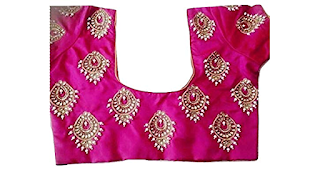The Art of Embroidery: Exploring its Types and Techniques
Embroidery work is a decorative technique that involves stitching designs, patterns, or motifs onto fabric using various types of stitches, threads, and needles. It is a form of needlework that has been practiced for centuries and is used to embellish textiles, garments, accessories, and home decor items. Embroidery can be done by hand or with the help of machines, and it offers a wide range of design possibilities. Here are some key aspects of embroidery work:
1. Stitches: Embroidery involves the use of different types of stitches to create various effects and textures. Some common stitches include:
- Satin stitch: A smooth, flat stitch used to fill in larger areas with solid blocks of color.
- Backstitch: A strong and durable stitch used for outlining shapes and creating fine lines.
- Chain stitch: A looping stitch that can be used for creating lines, outlining, or filling areas.
- French knot: A decorative stitch used to create small, raised knots that add texture and dimension.
- Cross-stitch: A stitch that forms an "X" shape and is commonly used for creating intricate patterns.
3. Design and Motifs: Embroidery can feature a wide range of designs, including floral patterns, animals, geometric shapes, landscapes, and more. Motifs can be pre-drawn on the fabric or created freehand by the embroiderer.
4. Embellishments: Embroidery often incorporates additional embellishments such as beads, sequins, pearls, mirrors, and stones. These elements can be added to enhance the design and create a more elaborate and eye-catching effect.
5. Techniques: There are various embroidery techniques, including:
- Hand Embroidery: Traditional hand embroidery involves using a needle and thread to create the desired design. It requires skill, precision, and attention to detail.
- Machine Embroidery: Machine embroidery utilizes computerized embroidery machines that can stitch intricate designs automatically. It allows for faster production and more complex patterns.
6. Applications: Embroidery work can be applied to a wide range of items, including clothing (such as sarees, dresses, jackets, and shirts), accessories (like bags, hats, and scarves), home decor items (such as pillows, tablecloths, and curtains), and even artwork.
Embroidery work is valued for its craftsmanship, artistry, and ability to add a unique touch to various textiles and objects. It is widely used in fashion, traditional crafts, and contemporary design, showcasing the creativity and skill of the embroiderers.



Comments
Post a Comment